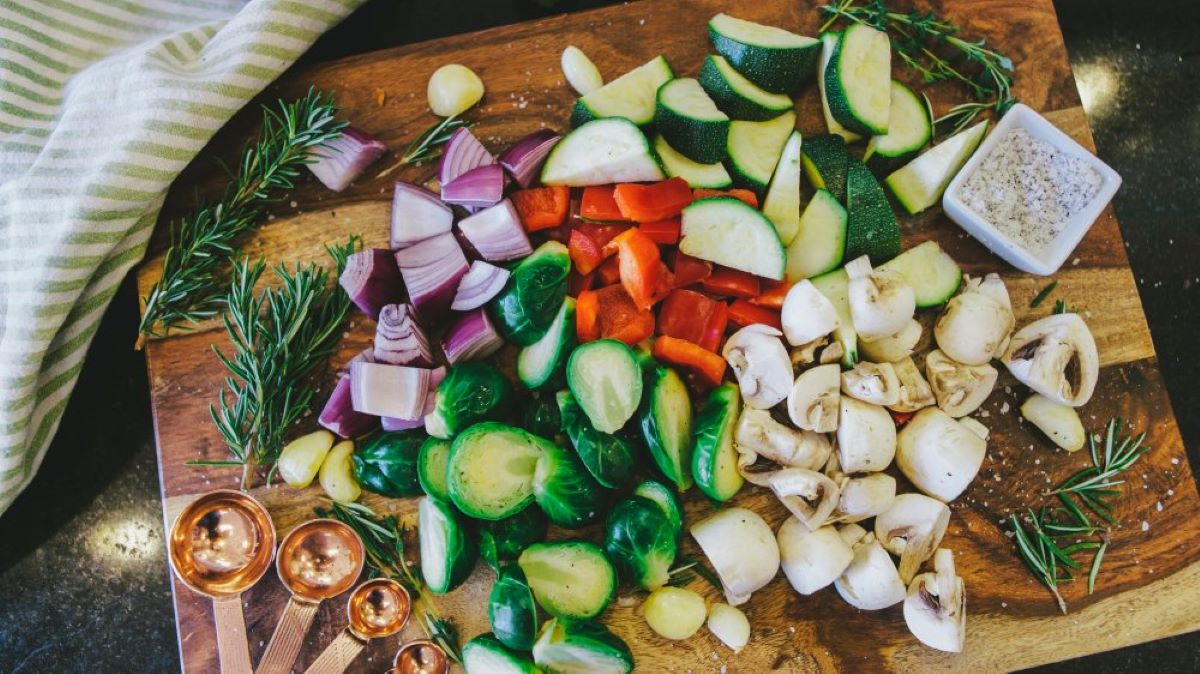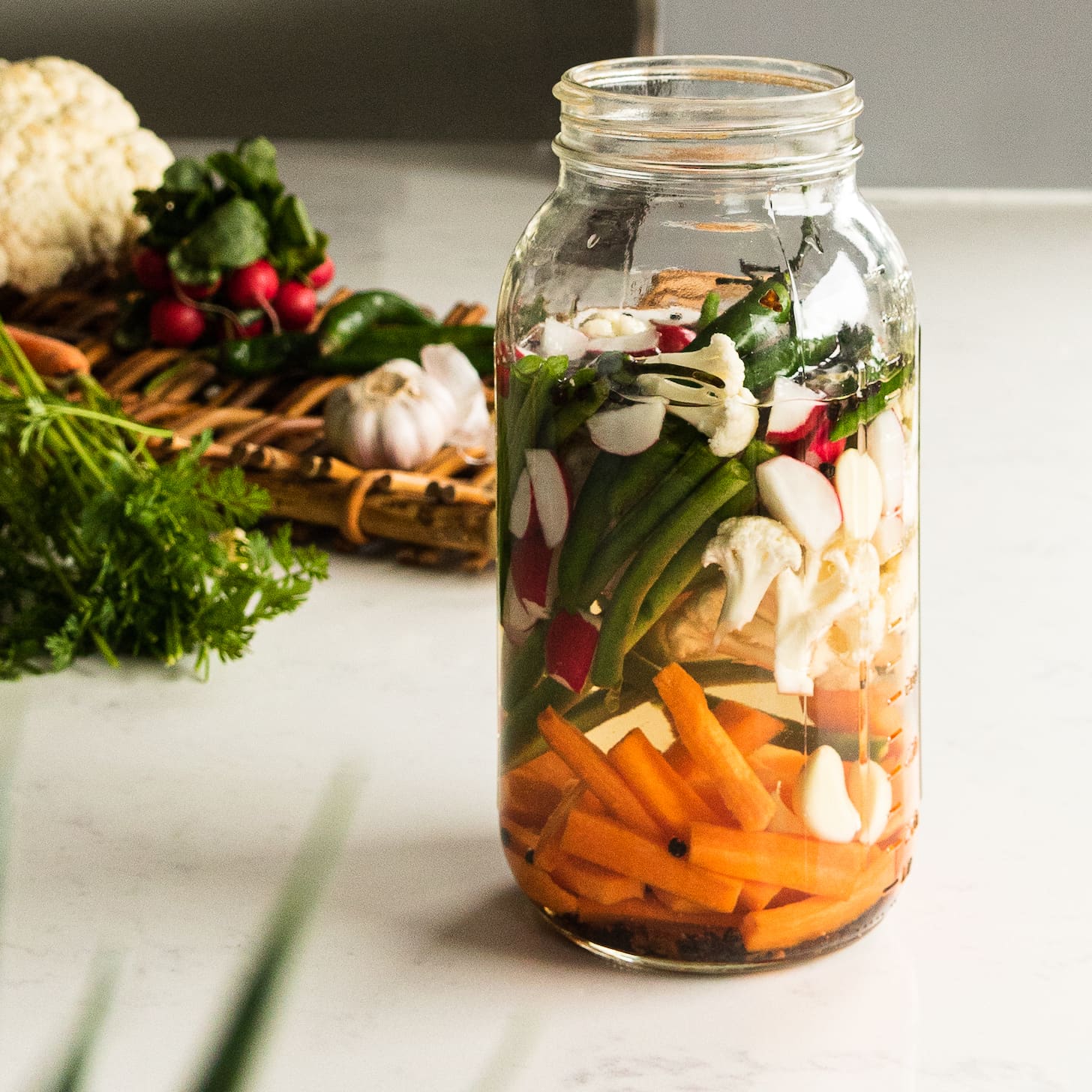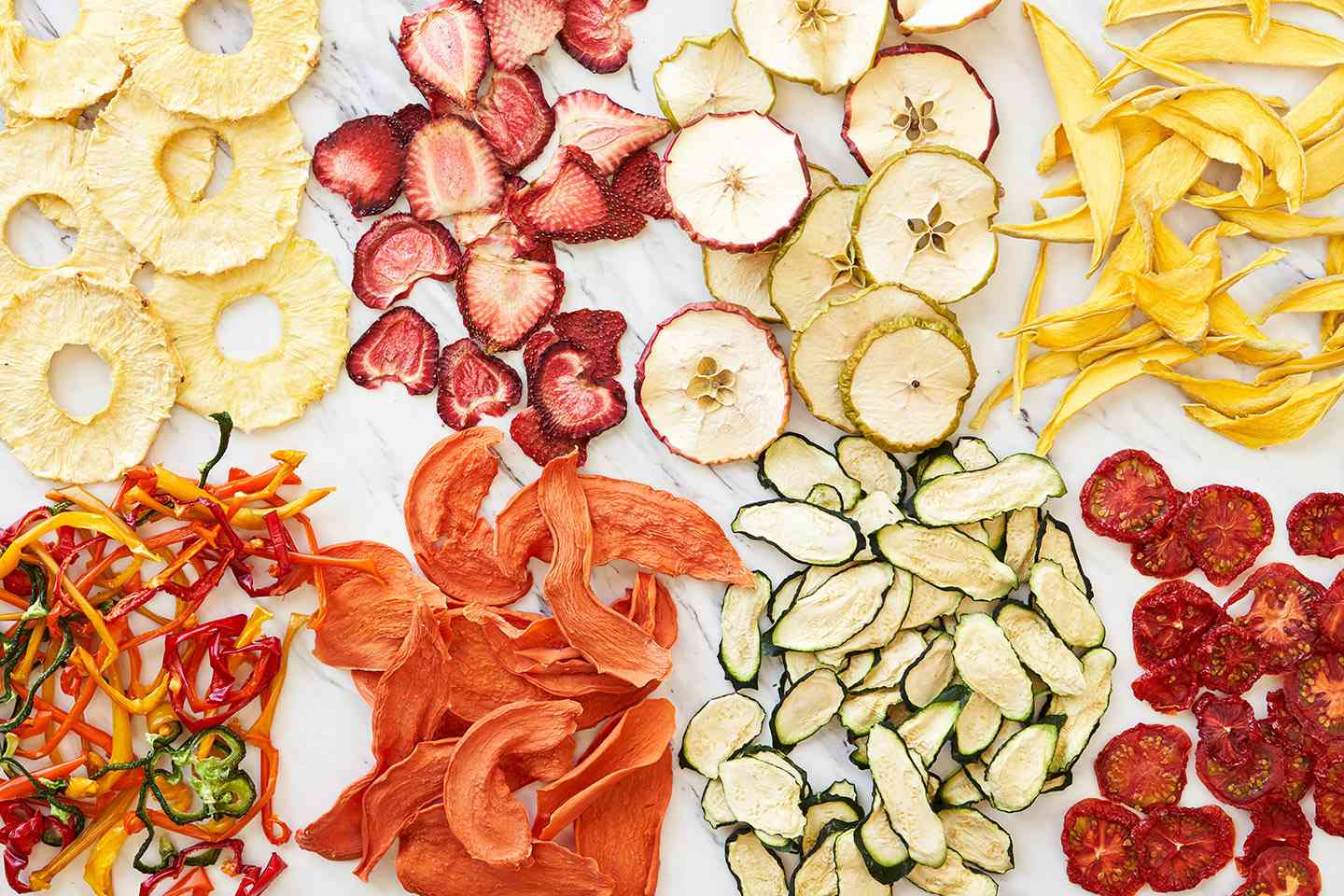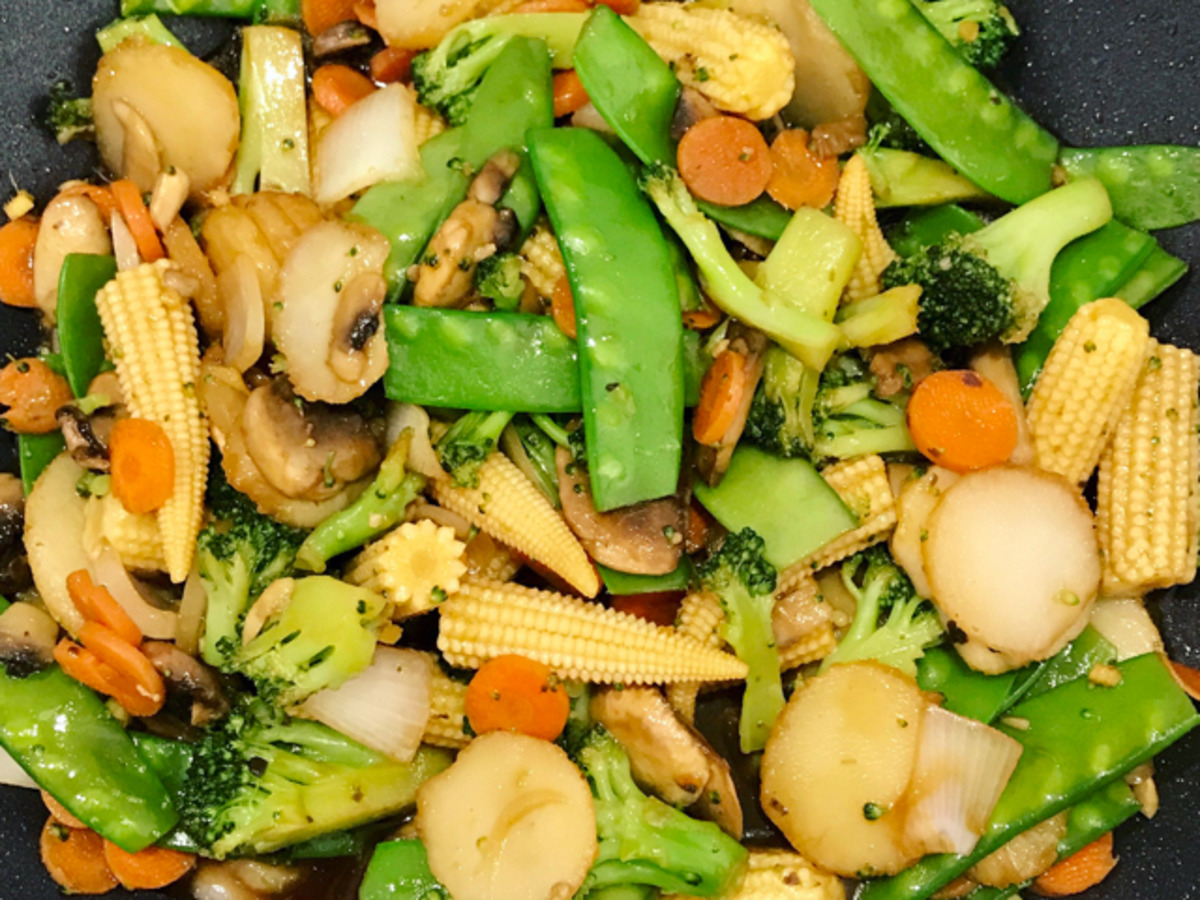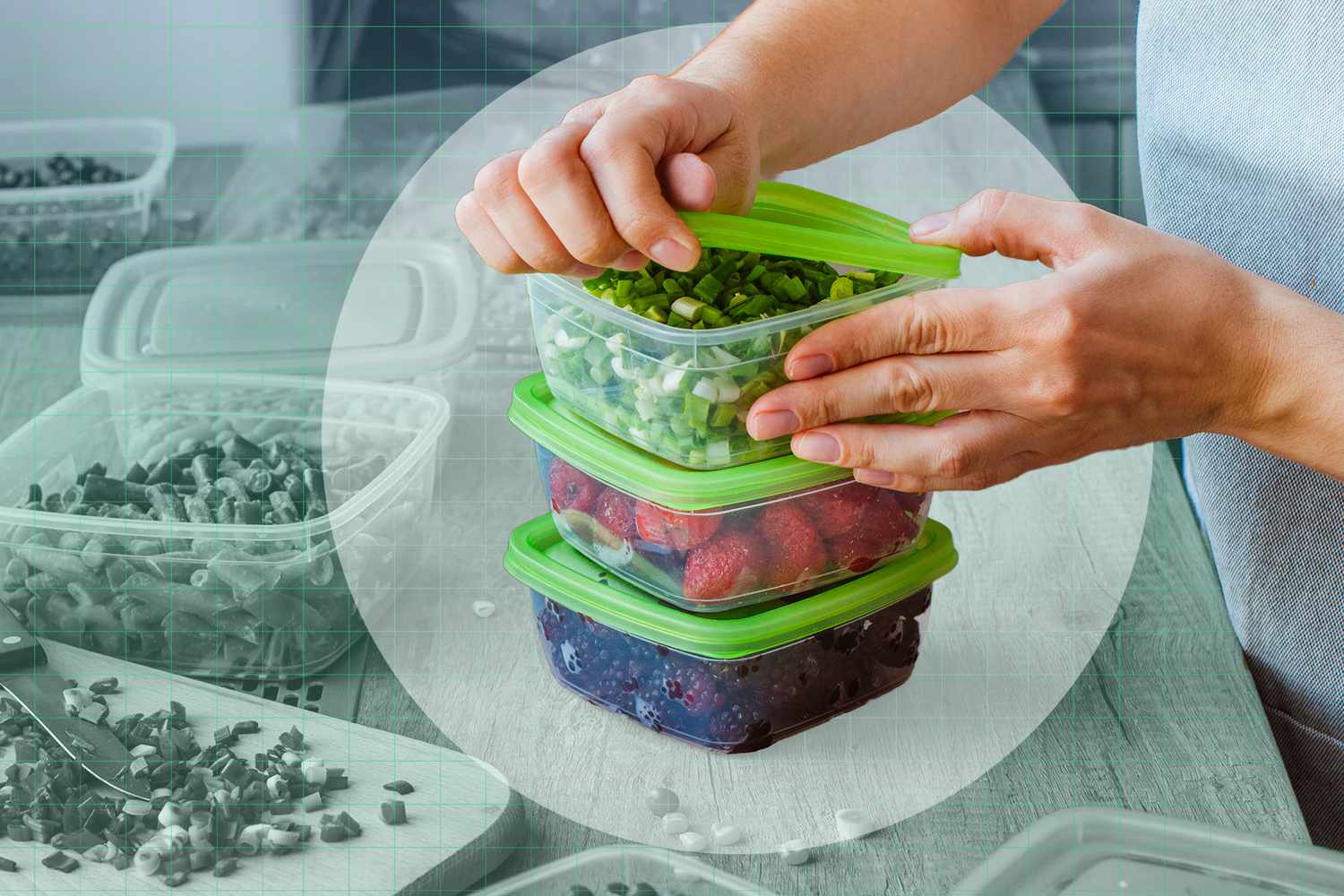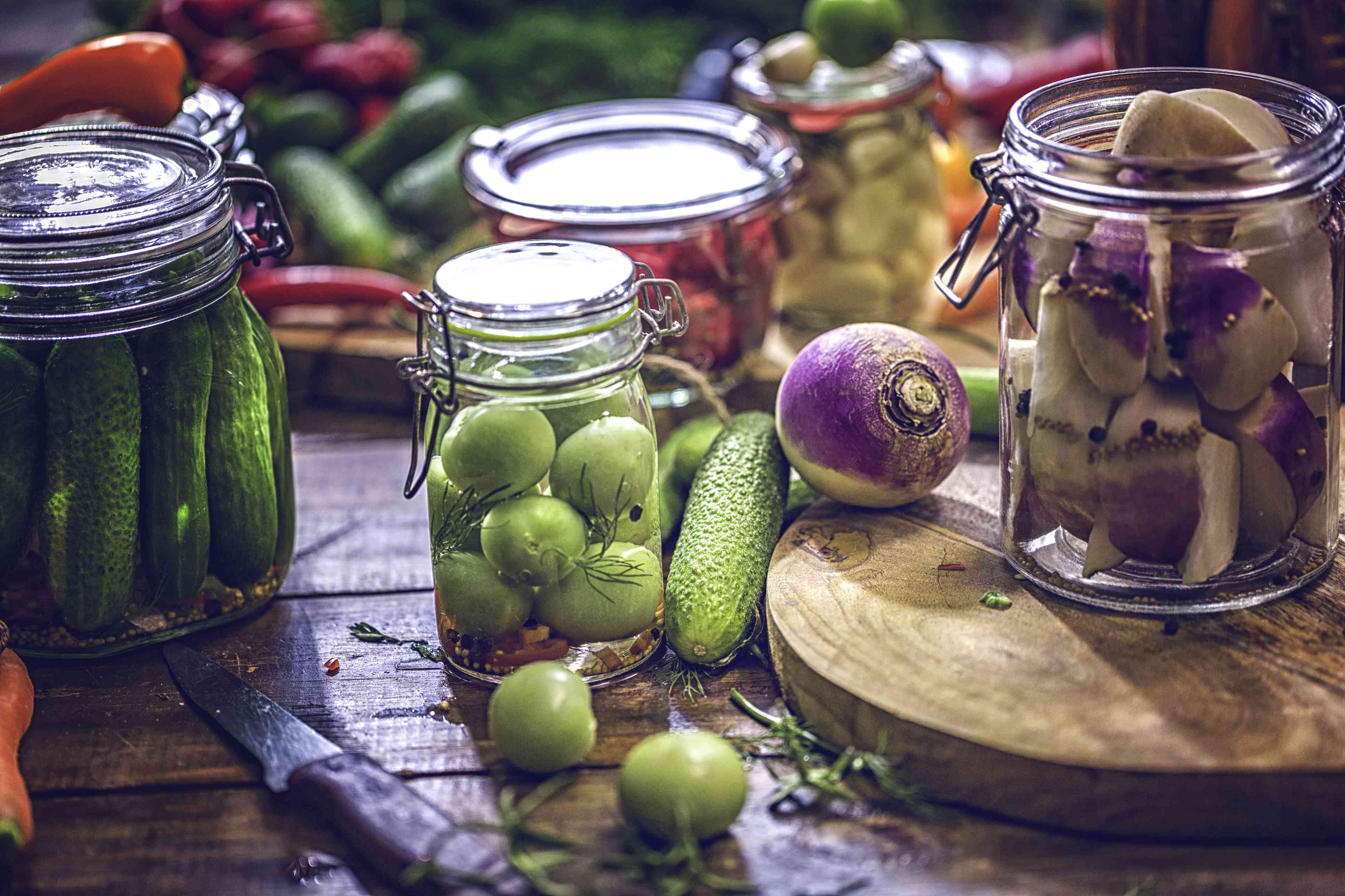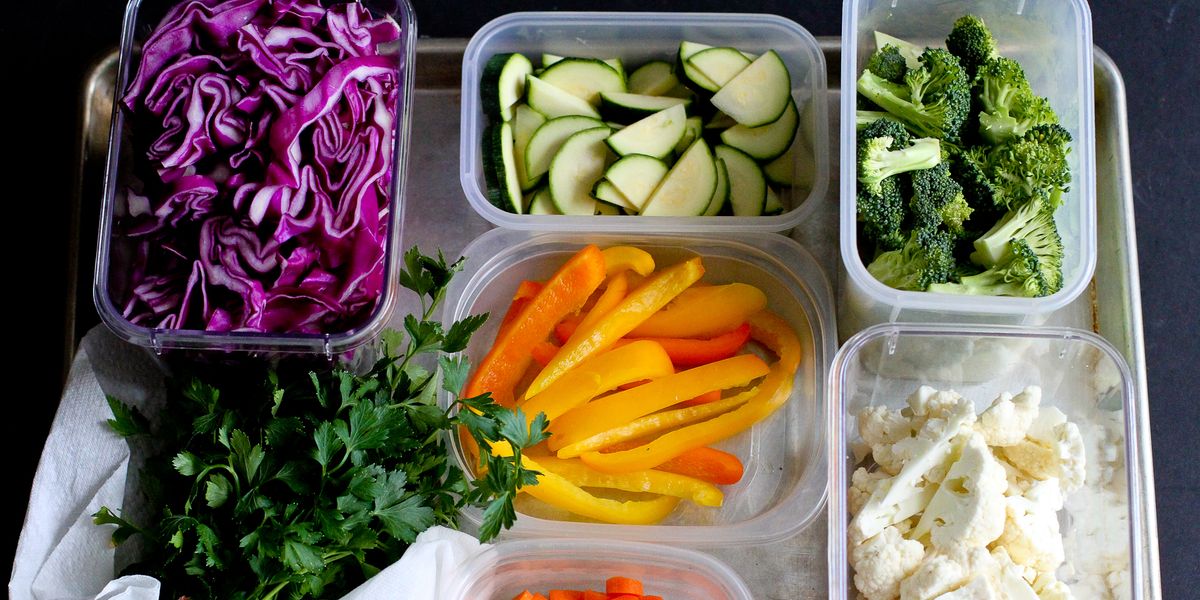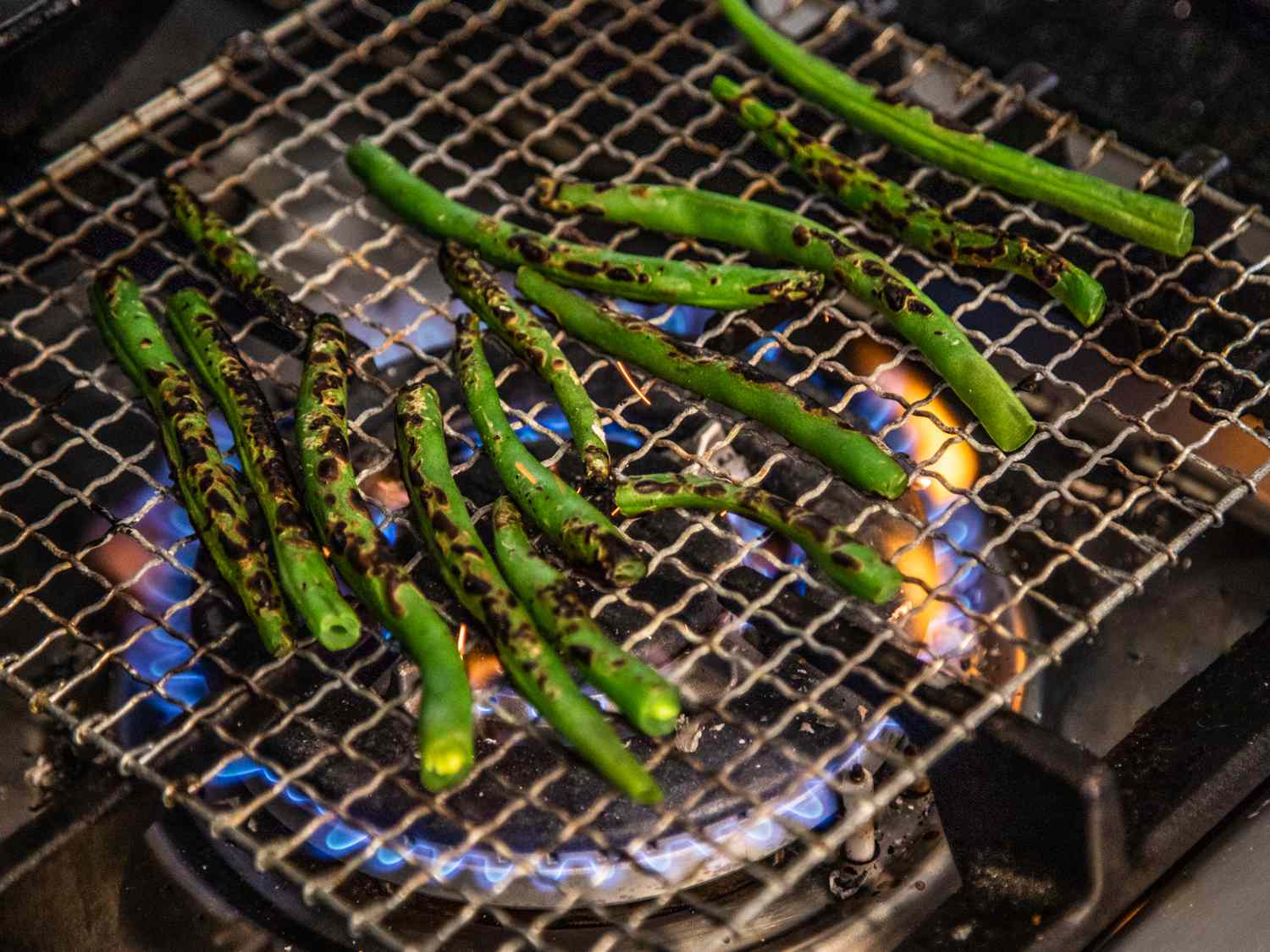Home>Gardening News and Trends>Latest News>How To Sweat Vegetables


Latest News
How To Sweat Vegetables
Modified: January 22, 2024
Discover the latest news on how to sweat vegetables, including tips, techniques, and recipes. Turn ordinary veggies into flavorful delights with our expert guidance.
(Many of the links in this article redirect to a specific reviewed product. Your purchase of these products through affiliate links helps to generate commission for Chicagolandgardening.com, at no extra cost. Learn more)
Table of Contents
Introduction
When it comes to cooking vegetables, there are various methods to consider. From boiling to roasting, each technique offers a unique flavor and texture. One method that is often overlooked but can elevate the flavors of vegetables is sweating. While sweating may sound like an intense workout, it actually refers to a gentle cooking process that involves sautéing vegetables over low heat with a bit of oil. This simple technique helps to release the natural flavors and aromatic compounds of the vegetables, resulting in a delicious and tender dish.
Sweating vegetables is a versatile cooking method that can be applied to a wide range of produce, including onions, garlic, carrots, celery, and more. It is particularly useful when preparing dishes such as soups, stews, stir-fries, and pasta sauces. Not only does it enhance the overall taste and aroma of the ingredients, but it also helps to retain their nutritional value.
In this article, we will explore the art of sweating vegetables in detail. From selecting the right cooking oil to adding seasonings, you will learn the step-by-step process for achieving perfectly sweated vegetables every time. Whether you are an experienced cook looking to experiment with new techniques or a beginner in the kitchen, mastering the art of sweating vegetables will add a new dimension to your culinary repertoire.
Why Sweat Vegetables?
At first glance, sweating vegetables may seem like an unnecessary step in the cooking process. However, this technique offers several advantages that make it worth considering:
- Enhanced flavor: Sweating vegetables allows their natural flavors to shine. The gentle cooking process helps to unlock the aromatic compounds present in the vegetables, resulting in a more intense and enjoyable taste.
- Tender texture: By sautéing vegetables over low heat, the heat penetrates the vegetables gradually, resulting in a tender and soft texture. This is especially beneficial for vegetables that can be tough or fibrous when raw.
- Improved digestibility: Sweating vegetables breaks down their cell walls, making them easier to digest. This can be particularly helpful for individuals with sensitive digestive systems or those who have difficulties digesting raw vegetables.
- Retention of nutrients: While some nutrients may be lost during the cooking process, sweating vegetables helps to retain more of their nutritional value compared to boiling or other high-heat methods. This is because the short cooking time and low heat exposure minimize nutrient depletion.
- Versatile cooking method: Sweating vegetables can be done with a variety of produce, making it a versatile cooking technique. Whether you’re working with onions, peppers, zucchini, or any other vegetable, you can easily incorporate sweating into your recipes.
- Flavor infusion: Sweating vegetables with aromatics such as garlic, ginger, or herbs can infuse the flavors into the vegetables, adding depth and complexity to your dishes. This allows you to create a flavor base that will elevate the overall taste of your recipe.
No matter the specific dish you are creating, sweating vegetables can take your culinary creations to the next level. Whether you want to add a subtle sweetness to your caramelized onions or bring out the earthy flavors of mushrooms, this technique offers a simple and effective way to enhance the overall taste, aroma, and texture of your dishes.
Preparing the Vegetables
Before you begin sweating vegetables, it’s important to properly prepare them. Follow these steps to ensure your vegetables are ready for the cooking process:
- Wash and clean: Start by thoroughly washing the vegetables under cold running water to remove any dirt or debris. Use a vegetable brush if necessary, particularly for tougher-skinned vegetables like potatoes or carrots.
- Peel and trim: For certain vegetables, such as onions and garlic, peel off the outer layers. Trim off any bruised or discolored parts of the vegetables, as well as the tops and tails, if needed.
- Cut into uniform pieces: To ensure even cooking, it is best to cut the vegetables into uniform pieces. This can be slices, julienne, cubes, or any other shape depending on your recipe. Consistency in size will help the vegetables cook evenly and result in a more visually appealing dish.
- Separate the leaves: If you’re working with leafy greens, such as spinach or kale, separate the leaves from the stems. The stems may require a longer cooking time, so you can add them to the pan before adding the leaves.
- Pat dry: After cutting the vegetables, pat them dry with a clean kitchen towel or paper towel. Removing excess moisture will prevent the vegetables from steaming instead of sweating when they are added to the pan.
Once your vegetables are properly prepared, you are ready to move on to the next step of the process: selecting the right cooking oil.
Selecting the Right Cooking Oil
Choosing the right cooking oil is crucial when it comes to sweating vegetables. The oil you select will not only affect the flavor of the dish but also the cooking process itself. Here are some key points to consider when selecting the oil:
- Smoke point: The smoke point of an oil is the temperature at which it starts to smoke and break down. For sweating vegetables, it is recommended to choose an oil with a high smoke point to prevent the vegetables from burning or developing a bitter taste. Some suitable options include canola oil, grapeseed oil, or refined avocado oil.
- Neutral flavor: Since the purpose of sweating vegetables is to bring out their natural flavors, using an oil that has a neutral taste is ideal. This allows the vegetables’ flavors to shine through without being overpowered by the oil’s taste. Extra-virgin olive oil can also be used, but keep in mind that it may impart a mild olive flavor to the dish.
- Health considerations: If you’re mindful of the health aspects, opt for oils that are low in saturated fats and high in monounsaturated or polyunsaturated fats. These healthier options include avocado oil, grapeseed oil, or light olive oil.
- Cooking method: Consider the cooking temperature and duration when choosing an oil. For longer cooking times, it’s best to select an oil with good stability, such as avocado oil or canola oil. For shorter cooking times, like quick sautés, extra-virgin olive oil can be a good choice.
- Personal preference: Ultimately, your personal preference plays a role in selecting the cooking oil. Experiment with different oils to find the one that suits your taste and dietary needs.
Keep in mind that while selecting the right oil is important, it’s also crucial to use it in moderation. Excessive oil can lead to a greasy texture or overpower the flavors of the vegetables. Aim for a thin coating of oil that evenly coats the pan and vegetables.
With the right oil selected, you are now ready to move on to the next step: heating the pan.
Heating the Pan
Heating the pan properly is essential for achieving perfectly sweated vegetables. Follow these steps to ensure your pan is heated to the right temperature:
- Select the right pan: Choose a pan that provides even heat distribution, such as a stainless steel or cast iron skillet. Avoid using nonstick pans for sweating vegetables, as they may not provide the desired browning or caramelization.
- Preheat the pan: Place the empty pan on the stove over medium heat. Allow it to heat up for a few minutes before adding the oil. Preheating the pan ensures that the heat is evenly distributed before introducing the vegetables.
- Add the cooking oil: Once the pan is preheated, add the desired amount of cooking oil. Swirl the oil around the pan to coat the bottom evenly. This will prevent the vegetables from sticking and ensure they cook evenly.
- Test the temperature: To check if the pan is properly heated, you can perform a simple test. Sprinkle a few drops of water into the pan. If the water evaporates immediately and sizzles, the pan is ready for the vegetables. If the water just sits in the pan without sizzling, wait a bit longer for the pan to heat up.
It’s important to note that when sweating vegetables, a medium heat setting is generally sufficient. Using high heat may cause the vegetables to cook too quickly or burn, while low heat may result in excessive moisture retention. Adjust the heat level accordingly to maintain a gentle and controlled cooking process.
Now that your pan is properly heated, it’s time to move on to the main step: sweating the vegetables.
Sweating Vegetables
Now that your pan is heated and ready, it’s time to start sweating the vegetables. Follow these steps to achieve tender, flavorful results:
- Add the vegetables: Carefully add the prepared vegetables to the pan. Spread them out in a single layer to ensure even cooking. If you’re working with vegetables that require different cooking times, add the ones with longer cooking times first and gradually add the rest.
- Stir occasionally: Use a spatula or wooden spoon to gently stir the vegetables from time to time. This will help prevent sticking and ensure that they cook evenly. Avoid stirring too frequently, as this may release too much moisture and result in steaming rather than sweating.
- Cook until tender: Continue cooking the vegetables over medium heat until they reach the desired level of tenderness. Sweating vegetables typically takes anywhere from 5 to 10 minutes, depending on the type and size of the vegetables. They should be cooked until they are just tender and have a slightly translucent appearance.
- Observe moisture release: As the vegetables cook, they will release moisture. This is a natural part of the sweating process. Keep an eye on the moisture level in the pan and adjust the heat as needed to control the evaporation. The goal is to have the vegetables soften in their own moisture without becoming overly watery.
It’s important to note that sweating is a gentle cooking technique, so the vegetables should not develop much color during this process. If you notice that the vegetables are browning too quickly, reduce the heat to maintain a gentle sweating process.
Once the vegetables are tender, it’s time to add seasonings to enhance their flavors. Continue reading to learn more.
Adding Seasonings
After sweating the vegetables to perfection, it’s time to elevate their flavors with the addition of seasonings. Here are some tips to ensure your seasonings complement the vegetables:
- Herbs and spices: Fresh or dried herbs and spices are a great way to add depth and complexity to your sweated vegetables. Consider using herbs like thyme, rosemary, or parsley, or spices like cumin, paprika, or turmeric. Sprinkle them over the vegetables and gently toss to evenly distribute the flavors.
- Aromatics: Aromatics such as garlic, ginger, and onions can take the flavors of your sweated vegetables to the next level. Add them to the pan a few minutes before the vegetables are done to allow their flavors to infuse into the dish.
- Liquid enhancers: For added depth of flavor, you can incorporate liquid enhancers such as soy sauce, balsamic vinegar, or lemon juice. These can be added towards the end of the cooking process and gently tossed with the vegetables to coat them evenly.
- Salt and pepper: Season with salt and pepper to taste. Adding these basic seasonings at the end will help bring out the flavors of the vegetables and balance the overall taste of the dish.
Remember to taste as you go and adjust the seasonings according to your preference. The key is to add seasonings in moderation to enhance the natural flavors of the vegetables rather than overpower them.
Once the seasonings are incorporated, give the vegetables a final gentle toss to ensure that all the flavors are well-distributed. At this point, your perfectly sweated and seasoned vegetables are ready to be served and enjoyed!
Tips for Perfectly Sweated Vegetables
To achieve perfectly sweated vegetables every time, consider the following tips and tricks:
- Use a wide pan: Opt for a wide and shallow pan rather than a deep pot. This allows for better evaporation and prevents the vegetables from becoming too steamed.
- Don’t overcrowd: Make sure not to overcrowd the pan with too many vegetables. Overcrowding can lead to steaming rather than sweating. If you have a large quantity of vegetables, it’s best to cook them in batches.
- Keep the heat medium: Sweating vegetables is a gentle cooking process, so it’s important to keep the heat at a medium level. High heat can result in burning or rapid moisture evaporation, while low heat may cause the vegetables to become mushy.
- Don’t rush: Patience is key when sweating vegetables. Allow the vegetables to cook slowly over low to medium heat, giving them enough time to release their natural flavors and become tender.
- Monitor the moisture: Keep an eye on the moisture released by the vegetables. If there is excessive moisture in the pan, consider removing the lid or increasing the heat for a short period to evaporate the excess liquid.
- Prevent overcooking: To avoid overcooking the vegetables, remove them from the heat as soon as they are just tender. Remember that residual heat will continue to cook them even after they are removed from the pan.
- Experiment with different vegetables: While certain vegetables are commonly used for sweating, don’t be afraid to experiment with different types. Each vegetable has its unique character and flavor, and the sweating technique can help enhance their natural qualities.
- Consider the dish: Keep in mind the final dish you are preparing. Sweated vegetables work well in a variety of recipes, including soups, stews, pasta dishes, and stir-fries. Adjust the seasoning and cooking time accordingly to ensure the flavors complement the overall dish.
- Enjoy the process: Sweating vegetables is a simple and enjoyable cooking method. Embrace the process, enjoy the aromas that fill your kitchen, and have fun experimenting with different flavors and combinations.
By following these tips, you’ll be able to create perfectly sweated vegetables that are tender, flavorful, and ready to be incorporated into your favorite recipes.
Serving and Enjoying
Once you have successfully sweated and seasoned your vegetables, it’s time to serve and enjoy them. Here are some suggestions on how to make the most of your perfectly sweated vegetables:
- As a side dish: Sweated vegetables make a delicious and nutritious side dish. Serve them alongside your favorite protein, such as grilled chicken or roasted salmon, for a well-balanced meal.
- In soups and stews: Sweated vegetables add depth and flavor to soups and stews. Whether you’re making a hearty vegetable soup or a comforting stew, the sweated vegetables will enhance the overall taste and texture of the dish.
- In pasta dishes: Toss sweated vegetables with cooked pasta, olive oil, and grated Parmesan cheese for a simple yet satisfying meal. You can also add them to creamy pasta sauces for an extra burst of flavor.
- In stir-fries: Sweated vegetables can be a great addition to stir-fry dishes. Add them to your favorite stir-fry recipe or create a vegetable-centric stir-fry by pairing them with tofu or shrimp.
- On top of salads: Use sweated vegetables as toppings for salads to add warmth and flavor. They can be served warm or at room temperature, providing a tasty contrast to the crispness of the greens.
- In grain bowls: Create vibrant and nutritious grain bowls by combining sweated vegetables with cooked grains like quinoa or brown rice. Add some protein, such as grilled tofu or chickpeas, and drizzle with a dressing or sauce of your choice.
- As a filling for wraps or sandwiches: Layer sweated vegetables in wraps or sandwiches for a flavorful and satisfying meal. Pair them with your favorite spreads and condiments for added taste.
- As a pizza topping: Use sweated vegetables as a topping for homemade or store-bought pizzas. They can add a burst of flavor and nutritional value to your pizza creations.
Get creative and explore your culinary imagination when incorporating sweated vegetables into different dishes. The possibilities are endless, and you’ll be amazed at how this simple cooking technique can elevate the flavors and textures of your meals.
Remember to enjoy the fruits of your labor and savor the deliciousness of your perfectly sweated vegetables. Bon appétit!
Conclusion
Sweating vegetables is a versatile and easy cooking technique that can elevate the flavors and textures of your dishes. By gently sautéing vegetables over low heat with a bit of oil, you can bring out their natural sweetness and aroma, resulting in tender and delicious creations.
Throughout this article, we covered the importance of sweating vegetables, the steps involved in preparing the vegetables, selecting the right cooking oil, heating the pan, and the process of sweating vegetables itself. We also explored adding seasonings to enhance the flavors and shared tips for achieving perfectly sweated vegetables every time.
Whether you’re a seasoned cook or just starting out in the kitchen, mastering the art of sweating vegetables opens up a whole new world of culinary possibilities. From soups and stews to pasta dishes and stir-fries, sweated vegetables can add depth and complexity to any meal. With a wide range of vegetables to choose from and various seasonings to experiment with, you can create unique and flavorful dishes to suit your taste.
So, next time you’re preparing a meal, consider incorporating the sweating technique and enjoy the mouthwatering results. Take your time, savor the aromas, and be creative in your culinary adventures. Whether you’re cooking for yourself or sharing a meal with loved ones, sweated vegetables are sure to impress and delight.
Now that you’re armed with the knowledge and skills to sweat vegetables, go ahead and unleash your inner chef. Explore different produce, experiment with seasonings, and discover the endless possibilities that come with perfectly sweated vegetables. Happy cooking!
